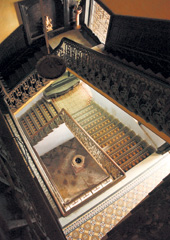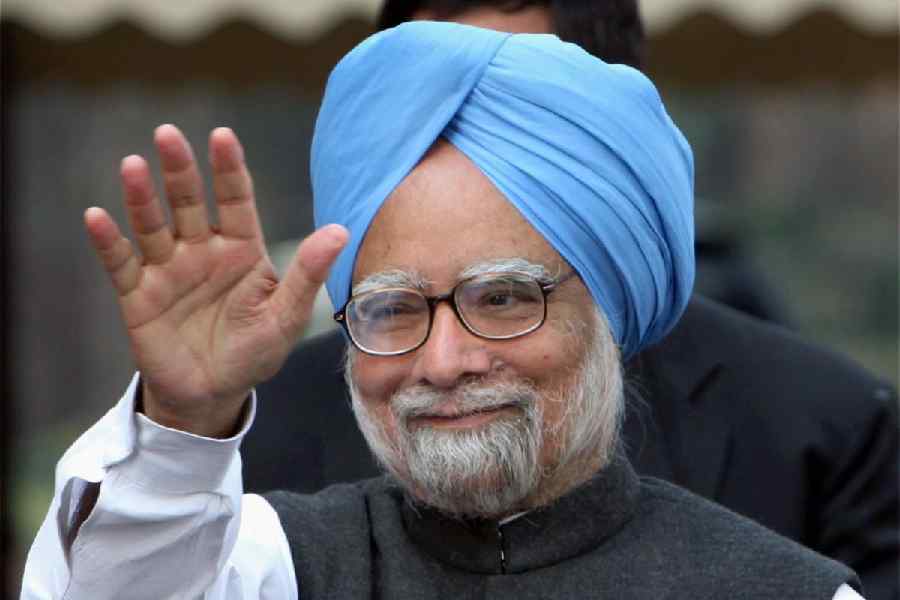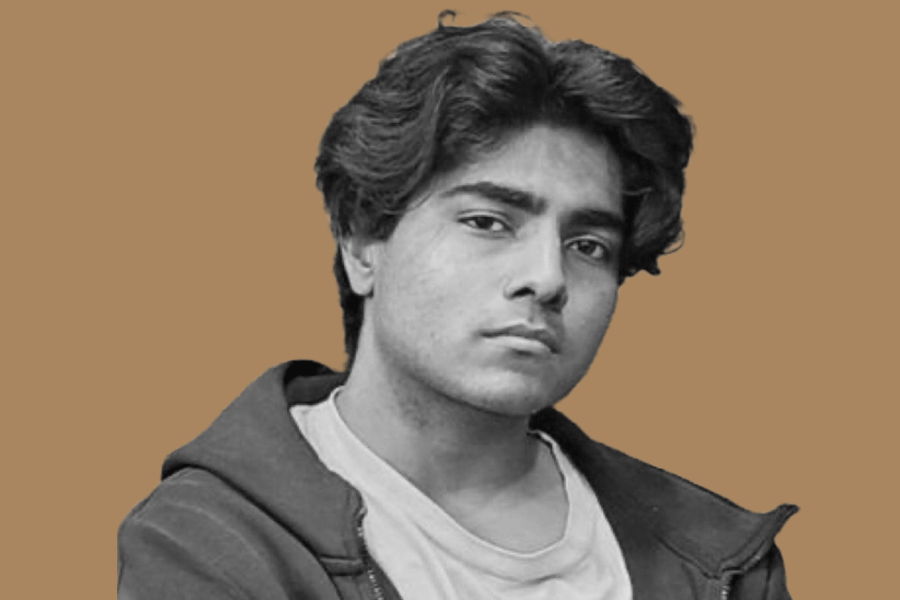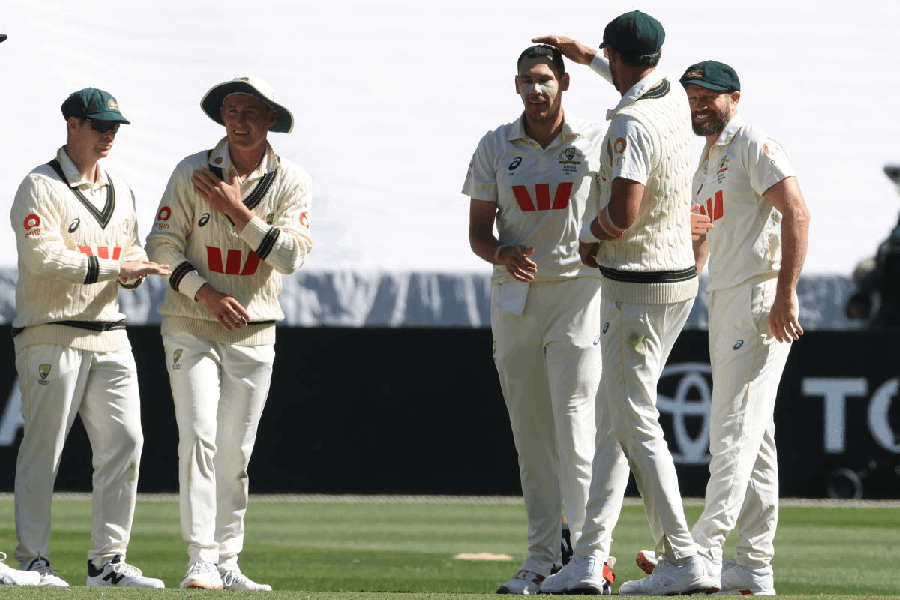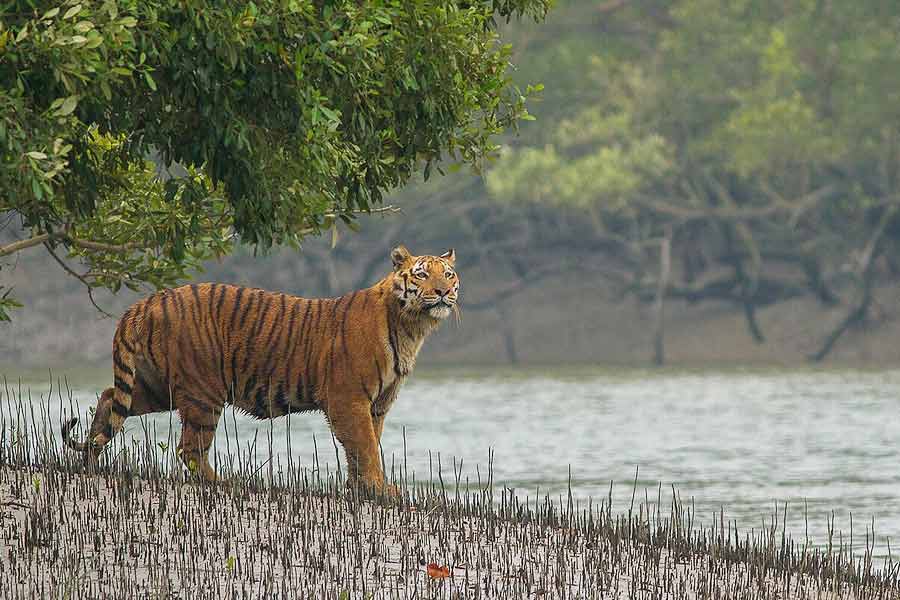 |
| Stairwell of Pathuriaghat Praasaad |
 |
| South Park Street Cemetery |
 |
| An exhibit at State Archaeological Museum |
 |
| College Street |
 |
| Old Oly |
 |
| National Library |
South Park Street Cemetery
First stop: a grim place. But a haunting, beautiful place.
Maintained by the Christian Burial Board, the South Park Steet Cemetery was founded on August 25, 1767. Henry Louis Vivian Derozio, William Jones, founder of Asiatic Society, John Hyde, a judge famous for his papers, are buried here, as is Rose Aylmer, the woman who inspired the poem of the same name by Walter Savage Landor. The tombs are in various stages of decay. The sight of the mossy tombstones, mostly imposing, some addressed to persons never known to history, as the headstone that says “here repose the earthly remains of James Miller”, in various stages of decay, but exuding serenity along the network of lichen-covered paths, brings soothing thoughts. If this is the end, it is not so bad. The caretaker is not very cooperative, though, and the place also invites criminal elements after the dark. But then visitors are not allowed.
National Library
Thirty lakh books and journals are housed inside the National Library standing tall at 1A Belvedere Road in Alipore. Established in 1836, the library building was the Governor General or Viceroy’s residence between 1854 and 1911. Warren Hastings, Lt- Gen. Tolly, Nicolas Nagent and Charles Robert Prinsep were some of the famous names that have dwelt at “Belverdere Bhavan”. Lord Curzon turned it into The Imperial Library in 1905. After India became free, the National Library was born in 1948.
“After 1911, the Viceroys used to come down for their winter vacations. It was their sheet kalin abason. Tradition, collections of rare books, a library inside a library and the beauty of the surroundings make The National Library an interesting tourist spot,” says Sankar Prasad Chakraborty, library historian whose Oitijhye, Uttaradhikare Jatiyo Granthagar, published in January 2006, is the first book on the library to be written in Bengali.
Take your visitor on a walk around the library’s 30-acre precincts. The beautiful garden, the grand flights of steps, the quaint lampposts that are a throwback to the past, garden statues — it’s pure romance. Then take him up the princely flight of stairs, get day memberships, let him take a look at the catalogues and get into the reading room. Imagine a ball happening there.
College Street
College Street, the centre from where once revolutions of thought started in Calcutta, is still charming. “Boi para”, about 130 years old, was featured in the Time’s Best of Asia List of 2007 as the Best Literary Treasure Hunt. Thacker’s Directory of 1886 shows about seven bookshops. The earliest records of second-hand bookshops were found in P.M. Bagchi’s Bengali Directory of 1899.
Take your visitor down the street that has both sides covered with the old book stalls. Show him the institutions — Presidency College, Medical College and Hospital, Calcutta University, Hare School and Hindu School — that are located here.
Then walk into Albert Hall of the Coffee House building. Visit the bookshops Rupa and Co. and Chuckervertty Chatterjee and Co. Limited, for it’s a ritual, then walk into the Coffee House. Many Calcutta intellectuals came of age here, but it doesn’t matter to GeNext. “We come here because we can sit here for hours with a cup of infusion (black coffee) and a plate of buttered toast with sugar and not be shooed away,” says a 19-year-old student of history honours.
But it doesn’t matter to Gen-Ex either. There are many elderly people about — and however seedy it looks, Coffee House is still free from the offensive, contemporary glitz that is enveloping everything. And the sandwiches are really good.
Pathuriaghat Street
While in the vicinity, drop in at Pathuriaghat Street. The actual road of this name begins at the Rabindra Sarani crossing and continues almost up to Strand Road, but the entire neighbourhood covering Darpanarayan Tagore Street and Prasanna Coomar Street goes by that name. Some of the stateliest of stately homes are located here.
On Pathuriaghat Street itself are the two houses of the Ghosh family. One has colossal columns fronting it. On the first floor of the one next to it is a magnificent gallery of photographs of the greatest Indian classical musicians. These are private homes but during the Pujas visitors are allowed. On the street running parallel are the fantastic Tagore Castle and Praasaad opposite it. Both palaces will take your visitor’s breath away
New Empire
Time to rest in the cool confines of a cinema hall. A power cut mid-film might plunge the hall into sudden darkness, but you won’t miss more than two minutes of the movie.
Major General Shamsher Jung Bahadur Rana, then home minister of Nepal, set up base in Calcutta more than 50 years ago and acquired 45 properties all across the city. New Empire was one of them and “it was something he cherished most”. The legendary Humayun Place theatre, not a film theatre to begin with, was set up in 1934. “He bought it from the Armenians. Ballets and plays used to be performed here. I have performed a ballet when I was four or five years of age. Then all the artists started to leave Calcutta and we had to turn it into a movie hall because it was no longer commercially viable to run it as a theatre,” says Susan Mantosh, proprietor and granddaughter of Rana. Yehudi Menuhin, Zubin Mehta, Uday Shankar and Amala Shankar, Tripti and Sambhu Mitra and their Bohurupee group have performed here. Edwina and Lord Mountbatten, and Jawaharlal Nehru have visited the theatre. Tagore directed a play here. The First International New Youth Film Festival was held at New Empire under the chairmanship of V. Shantaram.
The art deco architecture, a movie hall that can accommodate 1,000 people — New Empire remains one of the landmarks of Calcutta. The open bar has been shut down, but there is a bar, a rare facility in a movie theatre. The auditorium is maintained well.
 |
Gariahat fish market
Too much history? Get some real flavour of Calcutta. The Gariahat market lies on your right if you are heading towards Gol Park from the Gariahat crossing. Take the visitor to Gariahat fish market to see how seriously Calcuttans take their fish. The best fish is available during early morning. But this is also the time when the market, a few decades old, is most crowded and one must be careful not to step on the earnest fish-buyer’s foot.
From massive hunks of chital maachh and silvery black monsters called kaatla to thumb-sized varieties of mourala and punti maachh, every fish, especially the scaled variety, is here. Says Shankar Banerjee, who sits on one corner with a massive rohu and few middling kaatla: “Our customers come from all over the city, from Ballygunge to Park Circus and Salt Lake to Bhowanipore.” A little further away another man sits with a dozen silver fish scattered on a banana leaf. Next to him is a shallow aluminium tray filled with water which has palm-sized fish swimming in it. “Koi maachh khaben (Want Koi fish)?” he intones. A little away a cat yawns, its watchful eyes resting on the innards of various fish that a fish-seller is throwing away.
State Archaeological Museum
To clear the air, make a trip to the State Archaeological Museum at the Behala tram depot. Its new galleries are well worth a look for the treasure trove of artefacts from Bengal down the ages displayed here. The museum has a rich collection of artefacts from Chandraketugarh, and after seeing its sculpture gallery people will think twice before saying that Bengal does not have a tradition of sculpture.
Olypub (Olympia)
After the tiring round trip all over Calcutta end the day with beer at Olympia, better known as Olypub, in Park Street. Regulars swear by Oly’s Beef Steak and special Chicken a’la Kiev. It’s the best steak in town. Says 49-year-old government official Tapas Bhattacharya: “I got to Olympia because it’s cheap, roomy, with a no-frills ambience. It is a rendezvous for poets, artists, intellectuals and educated middle class and middle-aged folk.” Thrown in for free are the worn couches of the pub, Formica topped tables and peeling walls, cockroaches and rats. Apparently a move by the management to give the place an image makeover has met with strong resistance from its loyal customers.
Keoratola crematorium
While going back home, drop in at Keoratola Mahashmashan, the oldest and one of the biggest crematoriums in Calcutta, in Chetla. The last rites of many famous Calcuttans, Chittaranjan Das, Birendranath Sasmal, Satyajit Ray and Uttam Kumar were performed here. The wooden pyre that preceded the electric chullis, the first of which was established by Bidhan Chandra Roy in 1956, is still active. If your visitor is here during Kali puja, take him to attend the Shmashan Kali Puja that is said to be over 150 years old. If not, just getting to the crematorium through the narrow bylane bustling with business — photocopy shops, shingara, mishti and luchi eateries, chaddar shops — is witnessing another way of meeting death.

